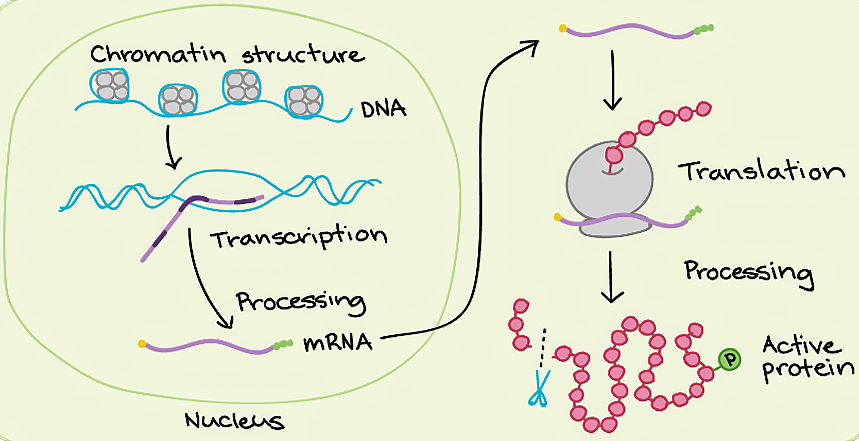Gene expression results in the formation of a polypeptide, it can be regulated at several levels.
- In eukaryotics, the regulation of Gene expression could be exerted at (1) transcriptional level -formation of primary transcript. (2) processing level -regulation of splicing.(3) transport of mRNA from nucleus to the cytoplasm.(4) translational level.
The genes in a cell are expressed to perform a particular function or a set of functions.
Example 1. The development and differentiation of embryo into adult oranisms are a result of the coordinated regulation of expression of several sets of genes.
Example 2.If an enzyme called beta-glactosidase is synthesised by E. Coli bacteria, it is use to catalyse the hydrolysis of a disaccharide, lactose into glactose and glucose, the bacteria use them as a source of energy.
Hence, if the bacteria do not have lactose around them to be utilised for energy sourse, they would not longer require the synthesis of enzyme beta glactosidase. Therefore, in simple terms,it is the metabolic, physiological or environmental conditions that regulate the expression of genes.
- In prokaryotes, control of the rate of transcriptional initiation is the predominant site for control of gene expression.
In a transcription unit, the activity of RNA polymerase at a given promoter is in turn regulated by interaction with accessory proteins,which affect its ability to recognise start sites.
These regulatory proteins can act both positively (activator) and negatively (repressors).











